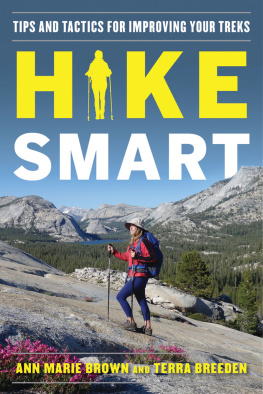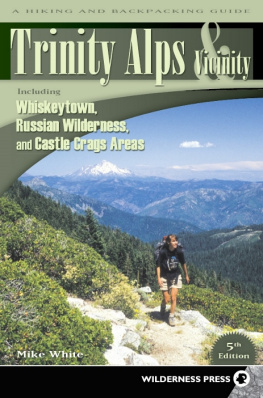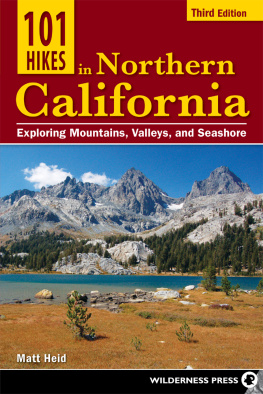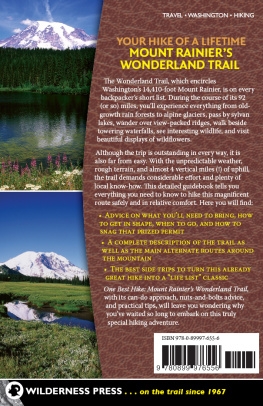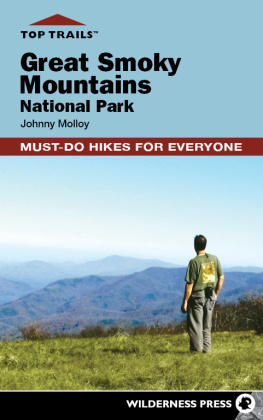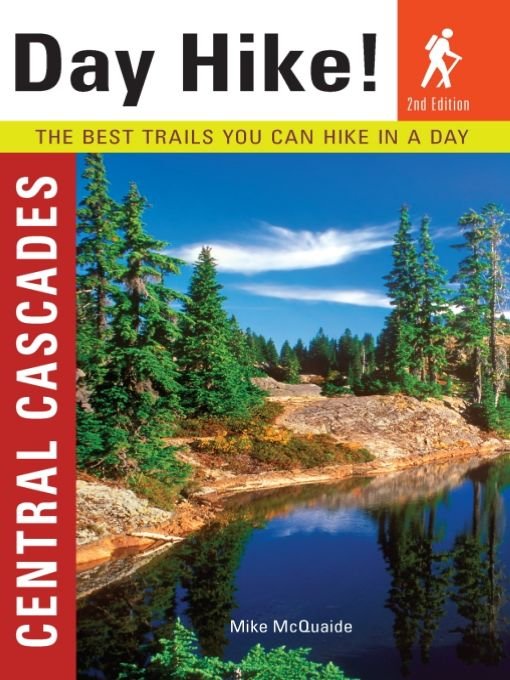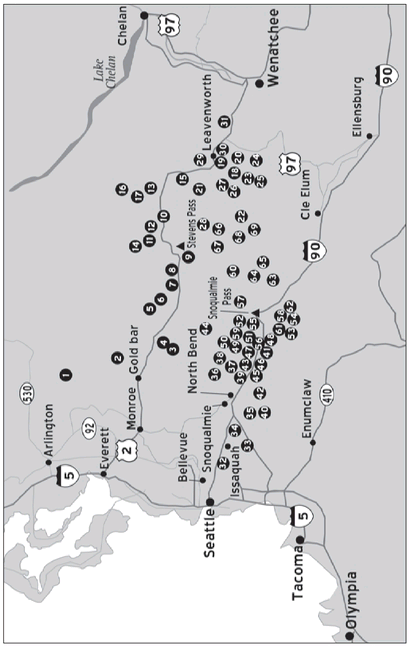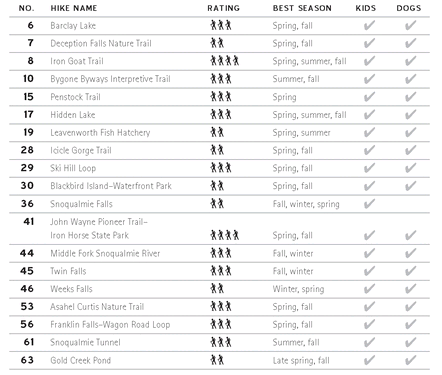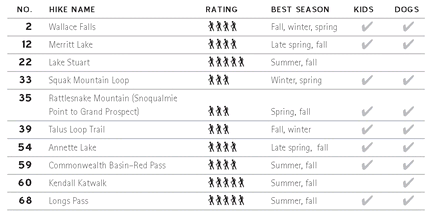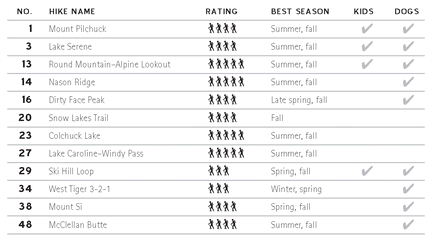Table of Contents
HIKES AT A GLANCE
EASY
MODERATE
MODERATELY DIFFICULT
DIFFICULT
EXTREME
ACKNOWLEDGMENTS
First up, no-brainer thanks to my songbird wife, Jennifer, and climbing-monkey son, Baker, lifes two greatest hits as far as Im concerned. Their patience and support throughout have been invaluable. A huge thank you also to preschool teacher par excellence, Nancy Lawrence, whose help was invaluable in finishing this book. The kindness, good cheer, and guidance you showed toward our son are things that we will cherish throughout our lives. Nancy, youre one of a kind. And while were at it, a shout-out to all the parents and children of the South Park Schoolhouse, which sadly closed in fall 2004. You are in our hearts forever.
I also want to thank the following individuals and organizations for offering their support, expertise, and/or friendship: Jim Kuresman (www.kuresman.com), Doug McKeever, Tim Schultz, Frank Schultz, Bud Hardwick, Paul Ricci, Rick Lingbloom, the Steeles, Margaret Gerard, Montrail, Ultimate Direction, Smartwool, and the people at Sasquatch Books.
THE CENTRAL CASCADES
The Cascade Mountains stretch all the way from the Fraser River in lower British Columbia south to northern California. For the purposes of this book, the Central Cascades are defined as that section of the range easily accessed from Highway 2 and Interstate 90. Basically, the corridors from Everett to Leavenworth, and Seattle to Cle Elum. Also included is Mount Pilchuk, because of its prominence and proximity to Everett.
From soaking wet, deep valley rain forests to high and dry alpine wonderlands, the Central Cascades offer the gamut of hiking experiences. There are short, riverside walks to places such as Twin Falls, where the Snoqualmie River plunges 150 feet in a misty explosion below, as well as mountaintop vistas more than a mile-and-a-half high such as Little Annapurna where, on clear days, youll swear you can see the four corners of Washington Stateand everything in between. (Take Rachel Lake and Rampart Ridge, for instance; theyve got a bit of both.)
Though both Highway 2 and Interstate 90 trend toward the south a bit, they run west to east, more or less. Thus, as you drive either across the state, you can watch as the terrain undergoes incredible and awe-inspiring changesfrom the deep evergreen fir and cedar forests, lingering mountain snow, and buckets of rain on the west side to the east sides sunny days, dry pine forests, and penchant for triple digit temperatures. That east-west diversity is especially dramatic along Highway 2, because its farther north and climbs higher than Interstate 90; Stevens Pass tops out at 4,061 feet, Snoqualmie Pass at 3,022 feet. As such, both highways are springboards for a smorgasbord of wildly diverse hiking experiences.
The west side is known for the wet face it tends to put on things. Clouds rolling in from the west tend to dump most of their moisture on the west side of the Cascade crestelevation, about 3,000 to 5,000 feetbefore they ever make it to the east side. From November to April, at elevations above 3,000 feet or so, this usually means snow.
The rest of the year those clouds offer much in the way of rain, showers, drizzle, fog, and precip. (From mid-July to the end of August, they do give it a rest.) Because of the heavy precip, youll come across more snow on the west side. Not surprisingly, waterfallsthats why theyre called the Cascade Mountains after alland water, in general, are more plentiful on the west side, too.
With the clouds mostly rained and snowed out by the time they cross the crest, the east side enjoys less snow and rain than the west, and more sunny days. Most years, mountain trails on the east sides of Snoqualmie and Stevens Passes are clear of snow weeks earlier than those on the west.
Common trees in the Central Cascades include Western red cedar, Western hemlock, Douglas fir, and Pacific Silver fir, with the east side of the Cascades boasting Ponderosa pine, Engelmann spruce, and Subalpine and Western larch. The Enchantment Lakes is worldfamous for its larch, which in fall turn a brilliant yellow-gold.
Being a day-hiking guide, this book wont pretend to be a comprehensive guide to Northwest flora and fauna; critter-wise and plant-wise, the species are too numerous to catalogue, but some of the common folk worth a mention include bald eagle, osprey, black bear, Roosevelt elk, mountain lion, hoary marmot, pika, mountain goat, American dipper, raven, and, on the east side, the occasional rattlesnake. Among the plants youre likely to see are trillium, Indian paintbrush, subalpine lupine, mountain heather, columbine, devils club, huckleberry, blueberry, and countless varieties of fungis and algae.
Alpine Lakes Wilderness
Most of the hiking trails in this book are on land in the Mount Baker-Snoqualmie or Wenatchee National forests. Although not national park land, many trails are in the Alpine Lakes Wilderness, a spectacular 394,000-acre mountain and forest wonderland sprinkled with nearly 700 lakes, which is co-managed by both forest agencies. Created in 1976, the wilderness is easily accessed at numerous points along Interstate 90 and Highway 2, and about half the states population lives within an hour of Alpine Lakes Wilderness. As such, privacy on some trails is not something thats always easy to find. But weekday visits dramatically improve your chances. Day permits are required for hiking the Alpine Lakes Wilderness; theyre free and are available at trailheads.
Alpine Lakes Wilderness trails range from easy west-side jaunts to places such as Denny Creek near Snoqualmie Pass to otherworldly moonscapes such as the hard-to-get-to, high-elevation Enchantment Lakes Basin, just outside Leavenworth.
Speaking of Leavenworth, this Bavarian-themed town makes an excellent not-too-far-away, eastside getaway thats right on the edge of some spectacular hiking. Icicle Road, mere minutes from your favorite espresso joint, offers what seems like dozens of worldclass hiking opportunitiesIcicle Ridge, Lake Caroline-Windy Pass, Little Annapurna, the Enchantments, Lake Stuart, and more. When it comes to hiking, Leavenworth is seriously the bomb.



